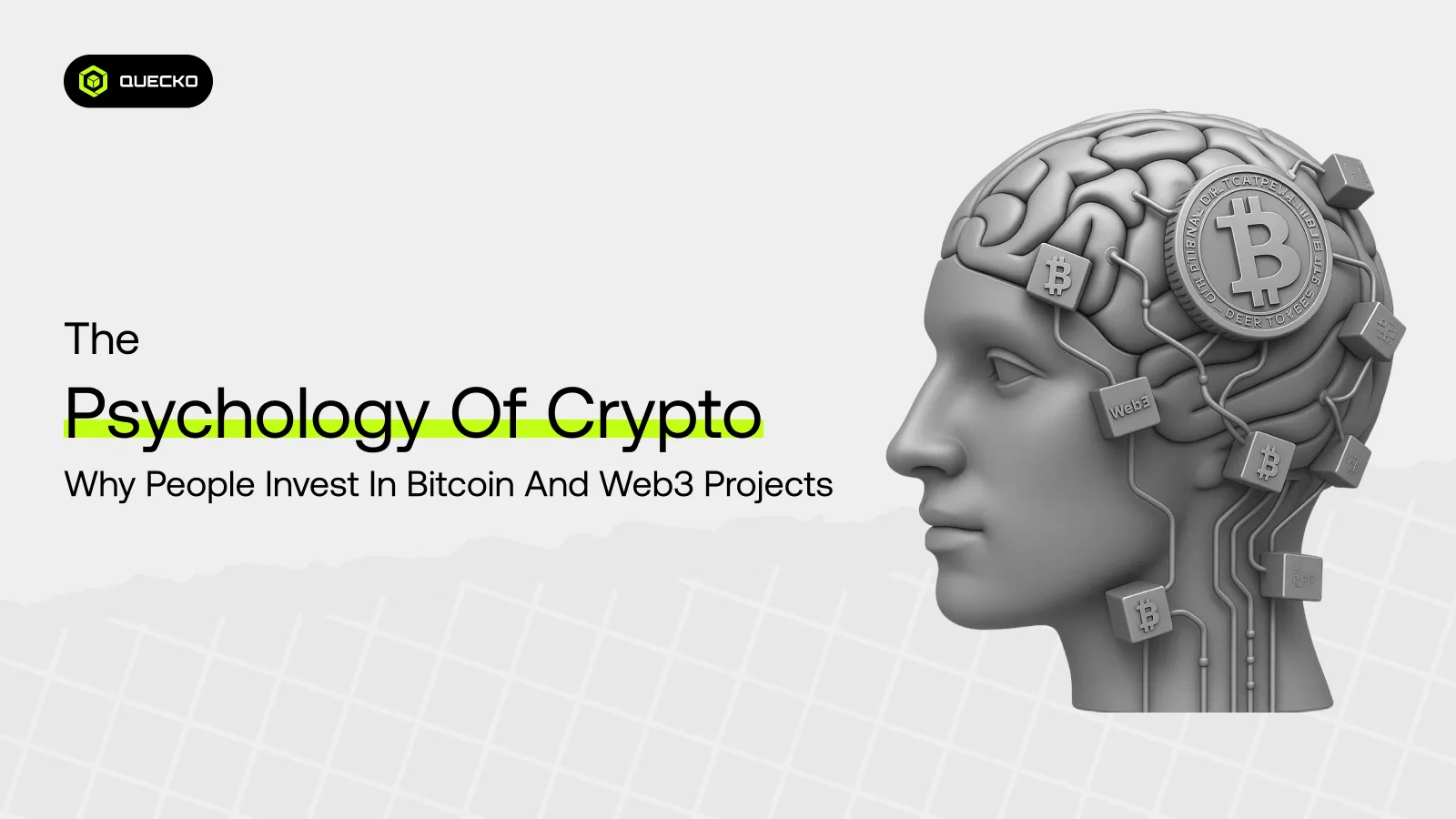Interoperability in Blockchain Networks: Bridging Different
Powerful blockchain interoperability drives multi-chain DeFi, token bridges, and efficient digital ecosystems.

Blockchain technology has revolutionized industries by introducing decentralized, transparent, and secure systems. With the rapid rise of blockchain networks like Ethereum, Solana, Polkadot, and Cosmos, each powered by unique consensus mechanisms and smart contracts, the demand for blockchain interoperability has become more urgent than ever. These networks often operate in silos, hindering the seamless exchange of data and value.
Without effective blockchain interoperability, decentralized applications (dApps) face limitations in scalability and cross-chain functionality. Atomic swaps, designed to enable direct asset exchange between blockchains, are underutilized due to the fragmentation of systems and incompatibility of smart contracts. The diversity in consensus mechanisms adds another layer of complexity to interoperability efforts.
To fully unlock the potential of blockchain technology, the industry must embrace solutions that promote interoperability across networks. Through atomic swaps, shared consensus protocols, and interoperable smart contracts, the barriers between blockchain platforms can be bridged, creating a unified and efficient decentralized ecosystem.
What is Blockchain Interoperability?
In the world of blockchain technology, interoperability refers to the ability of multiple blockchain networks to communicate, share data, and perform cross-chain transactions. With hundreds of growing blockchain networks, such as Ethereum, Polkadot, Cosmos, and Solana, each designed with its architecture, consensus model, and smart contract frameworks, the lack of blockchain interoperability can lead to fragmented systems that hinder innovation.
Without interoperability, decentralized applications (dApps) are confined to single networks, unable to interact with assets or data on other blockchain networks. This creates operational bottlenecks and limits user experience. Technologies like Relay Chains, especially within Polkadot’s ecosystem, play a critical role in enabling different blockchain networks to exchange information and participate in joint processes through inter-blockchain communication protocols.
Interoperability is also essential for executing cross-chain transactions, such as token swaps or shared smart contract logic. These features not only increase scalability but also enrich the utility of blockchain technology for enterprises, developers, and users alike.
Achieving seamless blockchain interoperability involves integrating smart contracts, shared consensus, and messaging protocols that span multiple blockchain networks. As these systems evolve, interconnectivity will be the key to unlocking the full potential of decentralized applications across diverse platforms.
Why Is Blockchain Interoperability Important?
As the number of blockchain networks continues to grow, ensuring seamless blockchain interoperability is crucial for harnessing the full potential of blockchain technology across various sectors. Currently, most blockchain systems operate with limited interconnectivity, creating silos that hinder growth in key areas such as decentralized finance (DeFi), public services, and supply chain management. The challenge lies in enabling smooth data and asset exchange across disparate distributed systems with diverse architectures and consensus models.
Enhanced Liquidity & Asset Utilization
- Assets confined within isolated blockchain systems have limited utility. Without efficient token bridges and reliable cross-chain communication protocols, tokens cannot interact or move freely between platforms, thereby reducing overall liquidity across the broader ecosystem of blockchain networks.
- Interoperability helps break this isolation. Solutions like Wrapped Bitcoin (WBTC) on the Ethereum network allow users to leverage Bitcoin’s value in Ethereum-based DeFi protocols, increasing both flexibility and asset accessibility.
- By integrating Layer 2 solutions and trust-minimized token bridges, users and developers can avoid relying solely on centralized bridges that pose security concerns, ensuring safer liquidity sharing across chains.
Scalability & Efficiency
- Each blockchain network has unique strengths: for instance, Solana focuses on transaction speed and throughput, while Bitcoin emphasizes robust cryptographic security and decentralization.
- Through effective blockchain interoperability, these networks can collaborate by exchanging data and assets, leveraging one another’s strengths for optimized performance. This is especially vital in complex use cases, such as supply chain management, where transparency and speed must go hand in hand.
- Integration with layer two solutions enables scaling without congesting base chains, allowing networks to preserve transaction finality and maintain efficient operations within a hybrid distributed system environment.
Improved User Experience
- One barrier to adoption has been the complexity users face when interacting across blockchain networks. They often need multiple wallets, interfaces, or centralized intermediaries to manage their assets.
- By embracing interoperable token bridges, trusted bridges, and layer2 solutions, users can conduct cross-chain transactions seamlessly and securely, without sacrificing ease of use.
- Smart contracts enhanced by blockchain interoperability streamline workflows across platforms, while universal protocols offer more intuitive and unified access to services including public services, gaming, and financial tools.
Growth of Decentralized Finance (DeFi)
- The success of decentralized finance hinges on removing boundaries between blockchain networks. When tokens and logic can move freely between platforms, users gain access to a broader range of services, including lending, trading, and yield farming.
- Trustless token bridges are enabling the frictionless movement of assets in DeFi protocols, thereby increasing market depth and reducing reliance on centralized bridges, which often involve a trusted entity and pose significant security concerns.
- Furthermore, interoperability boosts transaction finality and empowers distributed systems to coordinate financial services more efficiently. This creates new avenues for innovation, such as integrating identity solutions or connecting digital ledger infrastructure across multiple chains.
By prioritizing blockchain interoperability, developers, users, and enterprises can build a scalable, secure, and user-friendly Web3 experience. Whether through advanced layer2 solutions, trusted bridges, or evolving token bridges, the goal is clear: an open, connected network of blockchain systems
Challenges in Achieving Blockchain Interoperability
While the promise of blockchain interoperability is enticing, the path to achieving it across diverse blockchain systems remains riddled with technical, security, and regulatory hurdles. As blockchain technology continues to evolve, unlocking full connectivity requires overcoming the following challenges:
Different Consensus Mechanisms
Each blockchain system employs its the movement of data and assets, such as Proof of Work (Bitcoin), Proof of Stake (Ethereum 2.0), and newer models like Delegated Proof of Stake. These differing consensus mechanisms complicate synchronization across chains, making unified cross-chain solutions difficult to implement without custom protocols.
Divergent Smart Contract Languages
Smart contracts are the lifeblood of blockchain technology; yet, platforms like Ethereum (Solidity) and Solana (Rust) operate with distinct programming . Cross-chain the adoption of efficient cross-chain language solutions and universal standards in smart contract development.
Security Risks in Cross-Chain Bridges
Cross-chain bridges are critical infrastructure for facilitating the movement of data and Cross-chain between blockchain systems, but they also pose significant security risks, the cross-chain infamous $600 million Poly Network breach cross-chain solutions.
Regulatory & Compliance Issues
Cross-border cross-chain inconsistent regulatory frameworks. Varying rules apply to cross-chain solutions, especially in global blockchain systems for supply chain management and financial services.
Fragmentation Across Blockchain Networks
The sheer number of blockchain networks operating independently, each with its own standards, tools, and governance, leads to a fragmented ecosystem. Cross-chain use in solutions hinders blockchain interoperability decentralized innovation.
Solutions for Blockchain Interoperability
As the number of independent blockchain networks continues to grow, achieving effective blockchain interoperability becomes crucial for unlocking the full potential of blockchain technology. Without seamless connectivity across platforms, blockchain systems risk remaining isolated, thereby limiting innovation in areas such as finance, healthcare, logistics, and others. To overcome this fragmentation, a range of cross-chain solutions has emerged, each tackling specific challenges in cross-chain transactions, asset transfers, and data exchange.
Below are the leading technologies and protocols driving this movement forward.
1. Cross-Chain Bridges
Blockchain bridges are among the most widely used methods for achieving blockchain interoperability. These tools work by locking assets on one blockchain network and minting or unlocking equivalent tokens on another. For example, when transferring Bitcoin to Ethereum via a bridge, the original BTC is locked in a smart contract, while a wrapped version (such as Wrapped BTC) is minted on the Ethereum chain.
These blockchain bridges facilitate critical cross-chain transactions, enabling increased liquidity across various platforms. Prominent examples include:
- Polygon Bridge: Connects the Ethereum network with Polygon for faster and cheaper transactions.
- Wormhole: Facilitates transfers between Solana and Ethereum network.
- Multichain (formerly Anyswap): Supports asset movement across 80+ blockchain systems.
However, blockchain bridges also introduce potential vulnerabilities. Many rely on centralized custodians or complex smart contracts, which can become targets for exploits. The $600 million Poly Network breach demonstrated the security risks associated with such cross-chain infrastructure.
Despite these concerns, blockchain bridges remain a cornerstone of cross chain solutions, helping users, developers, and protocols navigate an increasingly diverse ecosystem of blockchain networks.
2. Blockchain Aggregators (Interoperability Hubs)
Another approach to blockchain interoperability is the use of interoperability hubs or aggregators, which act as middleware layers connecting multiple blockchain networks. These platforms utilize interledger programs, messaging protocols, and shared security frameworks to coordinate communication and execution across diverse chains.
Two of the leading examples are:
- Polkadot: Utilizes parachains (specialized blockchain systems) connected through a central Relay Chain. The Relay Chain manages consensus and security for the entire network, allowing seamless interaction between parachains.
- Cosmos employs the IBC (Inter-Blockchain Communication) Protocol to enable sovereign blockchains to exchange data and assets securely.
These aggregators serve as highly scalable cross chain solutions, improving flexibility for dApps, asset movement, and network scalability. By routing messages through trusted hubs and utilizing shared infrastructure, they reduce the overhead and complexity associated with building one-off integrations between chains.
Their use is especially valuable in sectors such as supply chain management, where multiple participants may operate on different blockchain systems but require synchronized data flows and consensus mechanisms.
3. Atomic Swaps
Atomic swaps are peer-to-peer mechanisms that enable cross-chain transactions without the need for intermediaries. These swaps utilize cryptographic techniques, such as Hash Time Locked Contracts (HTLCs), to ensure that either both parties receive the agreed-upon assets or the transaction fails, thereby minimizing trust requirements.
The most notable implementation is the Lightning Network, which facilitates fast and secure transactions between chains, such as Bitcoin and Litecoin. Atomic swaps embody the decentralized ethos of blockchain technology, enabling users to transact directly without relying on bridges, centralized exchanges, or third-party custodians.
While limited in scope compared to broader protocols, atomic swaps remain a powerful cross chain solution, particularly useful for enabling secure trades across incompatible networks.
4. Sidechains & Layer-2 Solutions
Sidechains and Layer-2 architectures aim to improve scalability and interoperability by offloading transactions from main chains. These are independent blockchain systems linked to primary blockchain networks, such as Ethereum, via blockchain bridges, which enable faster processing, lower costs, and enhanced privacy.
- Polygon functions as a sidechain to the Ethereum network, enabling high-speed transactions and compatibility with Ethereum-based smart contracts.
- Optimistic Rollups and ZK Rollups are Layer-2 solutions that batch and compress transactions, drastically increasing throughput while preserving the base layer’s security.
These platforms often interact via cross chain solutions, allowing tokens and dApp logic to flow across blockchain networks with minimal friction. Their role is pivotal in the growth of decentralized finance, where speed and cost are essential for competitive user experiences.
5. Universal Protocols & Standards
To unify blockchain systems, universal standards such as Chainlink CCIP and LayerZero have introduced standardized frameworks for messaging and execution across different chains. These protocols facilitate interoperability by abstracting the complexities of cross-chain transactions and enabling seamless communication between smart contracts across platforms.
- Chainlink CCIP (Cross-Chain Interoperability Protocol): A robust framework for delivering messages and executing functions across blockchains. By using decentralized oracles, CCIP improves trust and reliability in multi-chain environments.
- LayerZero facilitates omnichain interoperability, enabling smart contracts on one network to interact with those on another without the need for intermediary bridges. It functions as a messaging backbone for modern cross chain solutions, streamlining development across platforms.
These protocols are crucial for building more integrated ecosystems, breaking down silos among blockchain networks, and standardizing communication protocols, which enables industries like supply chain management to expand globally using consistent infrastructure.
The journey toward full blockchain interoperability is still unfolding, but these innovative approaches, blockchain bridges, aggregators, atomic swaps, sidechains, and universal standards, have laid a strong foundation. Whether you’re navigating the Ethereum network, building dApps across multiple blockchain systems, or exploring interledger programs, interoperability will be essential to harnessing the complete power of blockchain technology.
By embracing varied cross chain solutions, developers and enterprises can foster collaboration, accelerate innovation, and build scalable applications that move fluidly between blockchain networks. In the long term, this interconnected framework could redefine how digital systems communicate, breaking down barriers across finance, logistics, governance, and other areas.
Future of Blockchain Interoperability
As blockchain ecosystems continue to evolve, the future of blockchain interoperability promises to redefine how digital networks connect, collaborate, and scale. Several key advancements are poised to reshape the landscape, ensuring that diverse blockchain systems operate harmoniously through shared protocols, standards, and intelligent technologies.
Below, we explore what lies ahead for blockchain interoperability and how emerging innovations and regulatory clarity will accelerate its adoption.
More Secure Bridges
Blockchain bridges have long played a central role in achieving blockchain interoperability, enabling users to move assets across different blockchain networks. However, security vulnerabilities, especially in cross-chain bridges, have exposed users to serious risks. Future developments aim to make these bridges safer, faster, and more secure.
- Zero-knowledge proofs (ZKPs) will enhance cross-chain validation, making it more private and secure, and allowing for asset transfers without revealing user data.
- Decentralized oracles will replace centralized custodians, ensuring that cross-chain communication is verified through consensus-driven data feeds.
- An improved bridge architecture will better align with advanced data structures, thereby enhancing verification and minimizing attack vectors.
These improvements are essential for sustainable blockchain interoperability, reducing the risk of exploits while preserving trust across chains.
Standardization & Protocol Adoption
As fragmented ecosystems struggle to connect, establishing universal standards is critical for true blockchain interoperability. Standardization will help unify blockchain interoperability projects and increase adoption of cross-chain protocols and interfaces.
- The IBC protocol (Inter-Blockchain Communication), pioneered by Cosmos, is expected to become a widely adopted model for seamless data and asset exchange across sovereign blockchain networks.
- Interledger protocols will streamline cross-network financial transactions, enhancing the reach of DeFi protocols and making multi-network operations more intuitive.
- Efforts to standardize smart contracts and transaction formats will facilitate seamless integration across Layer 2 solutions, thereby enhancing user experience and dApp interoperability.
By reducing friction between platforms, these protocols provide foundational support for scalable and secure blockchain systems.
Regulatory Clarity
One of the major hurdles to global blockchain interoperability is inconsistent regulation. Each country has its own rules surrounding cryptocurrencies, cross-chain transfers, and data handling, which complicates the implementation of multi-chain solutions.
- Governments are beginning to recognize the need for clear frameworks surrounding cross-chain transactions, potentially introducing laws that support transparent and auditable transfers between blockchain networks.
- Compliance structures will increasingly embed into blockchain interoperability projects, offering legal clarity and fostering institutional adoption.
- Regulatory clarity will also facilitate integration of Artificial intelligence for risk management, fraud detection, and automated compliance across interoperable systems.
Once standards are established across jurisdictions, blockchain interoperability will benefit from higher trust, investor confidence, and enterprise adoption.
Mass Adoption & User Growth
With enhanced usability, security, and regulation, blockchain interoperability will unlock mass adoption across various industries, including finance, entertainment, logistics, and identity systems.
- Seamless DeFi protocols, powered by cross-chain transactions, will offer lending, borrowing, and trading across multiple networks, making financial services universally accessible.
- NFT marketplaces and gaming ecosystems will benefit from interledger protocols, enabling assets to transfer seamlessly across games and chains with minimal friction.
- Interoperable Layer 2 solutions will eliminate scalability bottlenecks, enabling high-performance capabilities for everyday users.
- Integration with Artificial intelligence will drive personalization and automation, analyzing user behavior across blockchain networks to deliver tailored services.
As users interact with diverse platforms, blockchain interoperability will ensure a unified experience, fostering global participation in decentralized ecosystems.
Integration of AI, Smart Contracts, and Automation
Looking forward, Artificial intelligence will play an integral role in optimizing blockchain interoperability, acting as an orchestrator for data flows, identity verification, and smart contract automation.
- AI-powered smart contract agents will dynamically adjust to network conditions, user preferences, and transaction needs across interoperable blockchain systems.
- Machine learning models will analyze on-chain and off-chain data structures to identify optimal paths for cross-chain transactions.
- Combined with zero-knowledge proofs, AI will help ensure secure, private interactions across multiple networks without compromising user control.
These will transform interoperability into a dynamic, adaptive framework powered by predictive analytics and decentralized logic.
Innovations from Blockchain Interoperability Projects
Several blockchain interoperability projects are leading the charge toward this interconnected future. These platforms are pioneering new methods for data exchange, identity verification, and the deployment of decentralized applications.
- Polkadot leverages its Relay Chain to unify parachains, providing shared security and enabling different blockchains to communicate under a common architecture.
- Cosmos continues to enhance the IBC protocol, making it easier for sovereign blockchains to exchange messages and assets.
- Emerging cross chain solutions are exploring hybrid models that incorporate AI, ZKPs, and multi-protocol architecture to build faster, more scalable networks.
By learning from early deployments and real-world stress tests, these projects are shaping the blueprint for future blockchain interoperability across sectors.
The future of blockchain interoperability is not just about connecting chains, it’s about unifying digital economies, unlocking global data fluidity, and making decentralized systems universally usable. As data structures improve, zero-knowledge proofs mature, and interledger protocols standardize cross-network communications, the next phase of blockchain will be defined by intelligent integration, security, and scale.
In this new frontier, blockchain interoperability will serve as the backbone of global decentralized innovation. Whether in finance, supply chains, identity management, or gaming, interoperable systems will empower users and enterprises to interact freely, across borders, platforms, and applications.
Conclusion
Blockchain interoperability is essential for realizing the full promise of blockchain technology. By enabling seamless communication across distributed systems, it transforms isolated chains into dynamic, interconnected ecosystems.
Innovative solutions, such as trustless bridges, the Polkadot network, and the Cosmos IBC protocol, are eliminating reliance on any single trusted entity, thereby securing digital currencies and data flow through decentralized, scalable infrastructure. Meanwhile, the Quant Network is advancing enterprise-grade interoperability through the use of standardized blockchain transmission protocols.
Key advancements, such as zero-knowledge proofs, decentralized consensus, and the integration of AI, are enhancing both security and scalability. As regulatory clarity improves and transaction finality becomes more robust across platforms, expect rapid adoption across DeFi, gaming, and identity systems.
Interoperability isn’t just a feature, it’s the foundation of Web3.
Date
5 months agoShare on
Related Blogs

The Psychology of Crypto: Why People Invest in Bitcoin and Web3 Projects
20 hours ago

Layer 2 Solutions: Scaling Bitcoin and Ethereum Without Breaking the Chain
2 days ago

The Hurdles to a Truly Decentralized Exchange Future
7 days ago

Smart Contracts vs Traditional Contracts: What Businesses Need to Know
23 days ago








